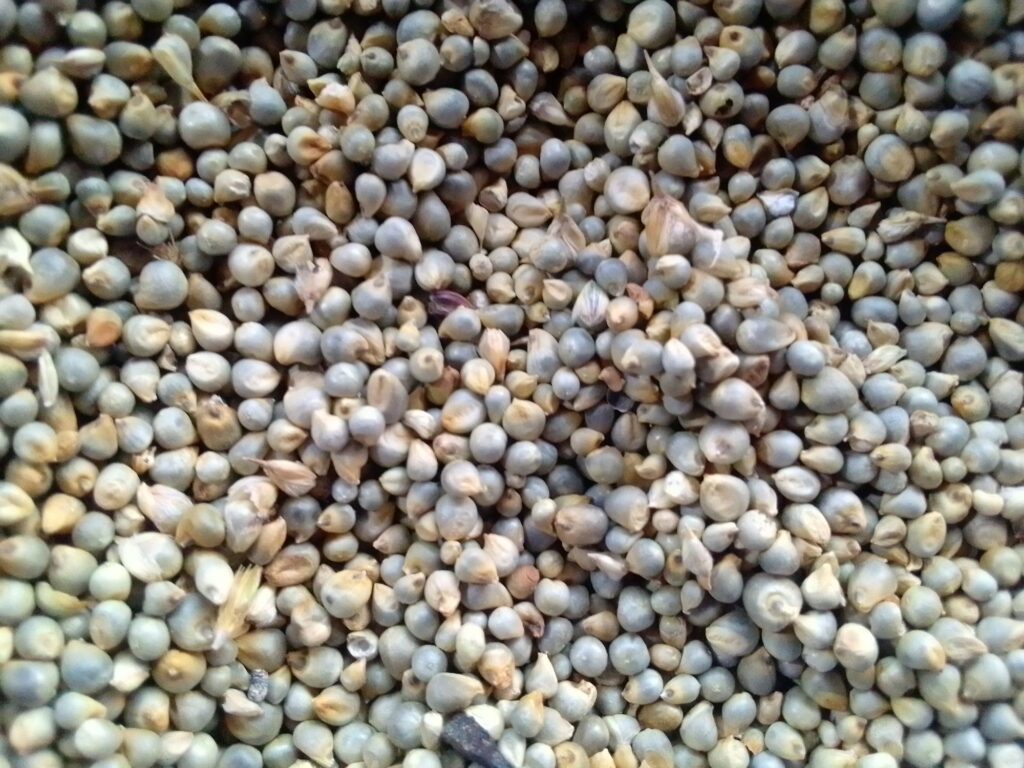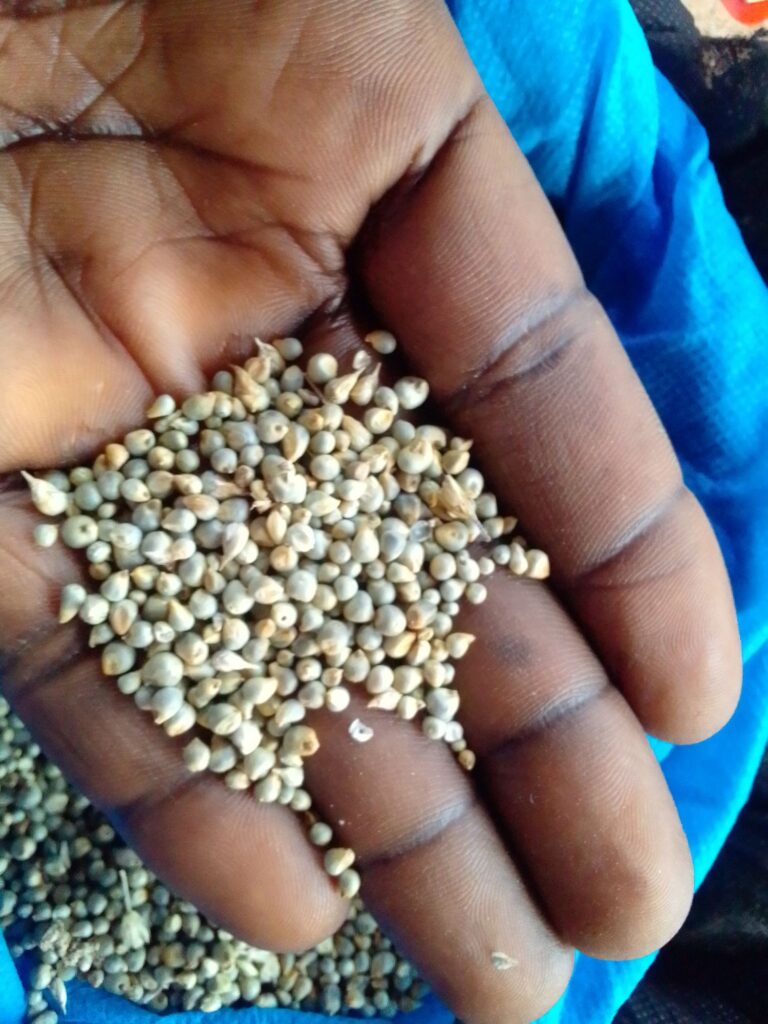
Not long ago, a friend of mine returned from Meru region carrying something I had only ever heard about but never seen with my own eyes — mawele, or pearl millet.
In Busia, we’re no strangers to cereals like wimbi (finger millet) and mtama (sorghum). These are the grains our households grow and use for porridge, ugali, or brewing. But when my friend handed me a small packet of grayish-white seeds, I realized this was something different.
Curious, I asked her what the people in Meru do with them. She told me, “Hizi ni za uji. The Meru people use them for porridge.”
That caught my attention. I had heard the name mawele before, but this was the very first time I was actually holding it.
Excited, I called my sister in Nairobi to share the discovery. She laughed and said, “Of course, I know mawele!” She explained how common they are in some parts of Kenya, particularly for porridge. Then she gave me a word of caution: “Don’t plant all of them at once. Just test a few seeds first to see if they can adapt to your area.”
Her advice made sense. So yesterday, while sowing sesame in my shamba, I carefully spared a few lines just for mawele. To me, it felt like beginning a small experiment — the same feeling I had some years back when I brought peas (minji) from Embu county to see if they could grow in Busia.
So What Exactly is Mawele?
In Swahili, these cereals go by different names:
Mawele → Pearl millet (Pennisetum glaucum)
Wimbi → Finger millet (Eleusine coracana)
Mtama → Sorghum (Sorghum bicolor)
And here’s how to tell them apart:
Wimbi (finger millet) is tiny and reddish-brown, famous for its calcium content.
Mtama (sorghum) is larger, with white, red, or brown grains, widely used for ugali, porridge, and traditional brews.
Mawele (pearl millet) sits in between — round, grayish-white grains, slightly bigger than wimbi but smaller than mtama.
How People Use Mawele
In Meru and other semi-arid regions, uji wa mawele is a common household meal — smooth, filling, and often enriched with milk. Some households also make ugali wa mawele, though not as common as maize ugali. And like sorghum, pearl millet can be fermented into local brews. Beyond the kitchen, farmers also use the grains and stalks as livestock feed.

Why Mawele is Good for You
Pearl millet isn’t just another cereal; it’s a nutritious powerhouse:
- Packed with iron, protein, magnesium, and fiber.
- Naturally gluten-free, good for those with sensitivities.
- Has a low glycemic index, which helps in managing blood sugar — making it friendly to diabetics.
- Supports digestion thanks to its fiber content.
- And importantly, it is a drought-resilient crop, making it a survival grain in harsh climates.
Where Mawele Thrives
One of the reasons mawele is beloved in semi-arid regions is its toughness.
- It grows well with low rainfall (250–700 mm annually).
- Thrives in hot temperatures (25–35°C) and can handle even higher.
- Prefers light, sandy, well-drained soils but tolerates poor soils better than maize.
- Can be planted from the lowlands up to 1,800 meters above sea level.
- And it matures fast — in 75–90 days, making it reliable even when rains are short.
A Seed, A Story
For me, planting mawele is more than just trying a new crop. It is a way of expanding my farm’s food basket, exploring possibilities beyond the familiar wimbi and mtama. It connects me to food traditions from Meru, and who knows — maybe this hardy cereal will find a home in Busia too.
Sometimes, the seeds we plant are more than just crops. They are stories — carried from one region to another, from one farmer to the next. And as I wait to see how my little patch of mawele grows, I feel like I’m part of that bigger story: rediscovering Africa’s resilient, indigenous foods.
Closing thought: If my experiment succeeds, maybe someday in Busia, mawele will no longer be a stranger on the farm, but a welcome friend in the kitchen.

Disclosure: This banner contains an affiliate link. I may earn a commission if you purchase through it, at no extra cost to you.
